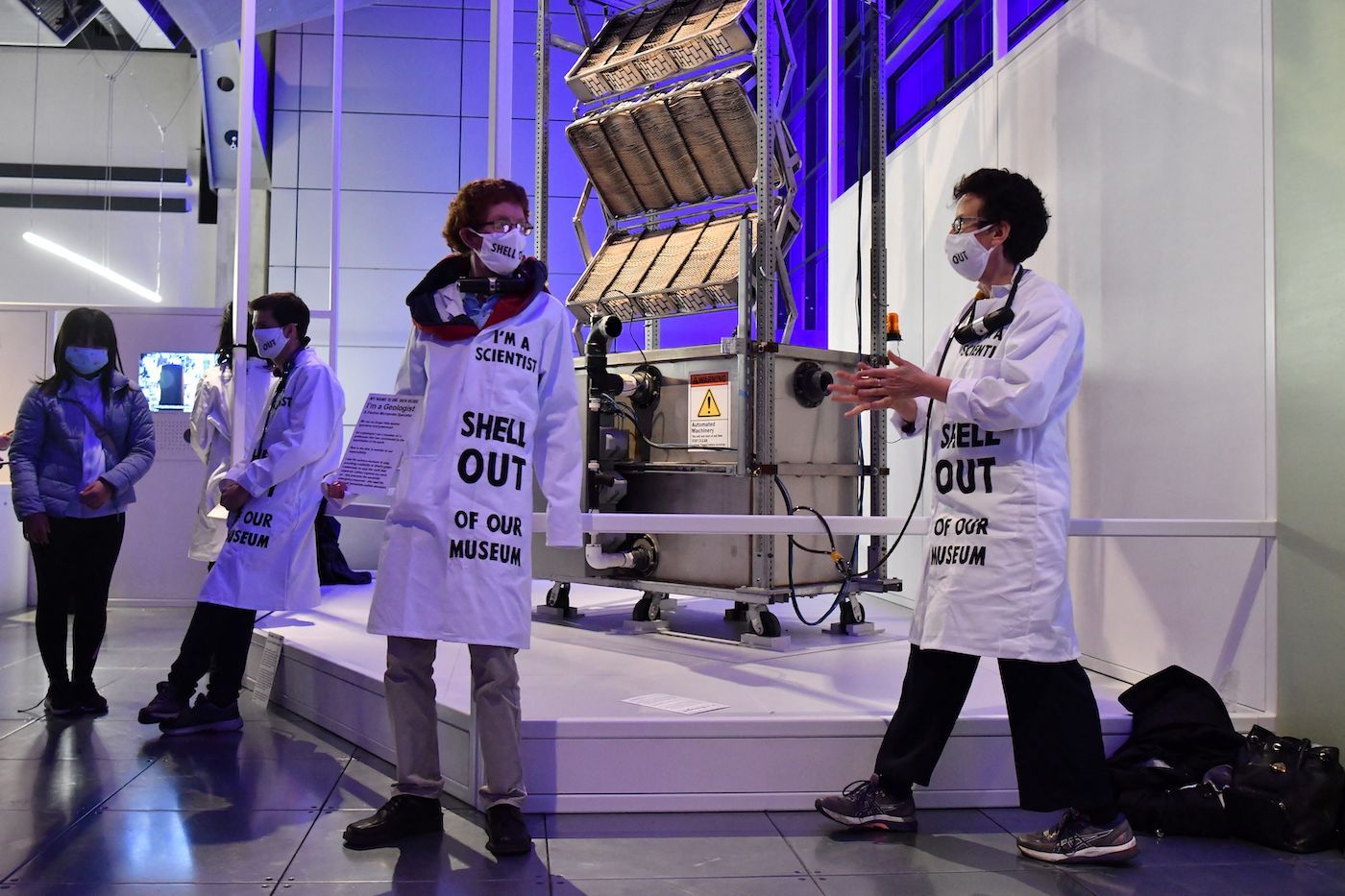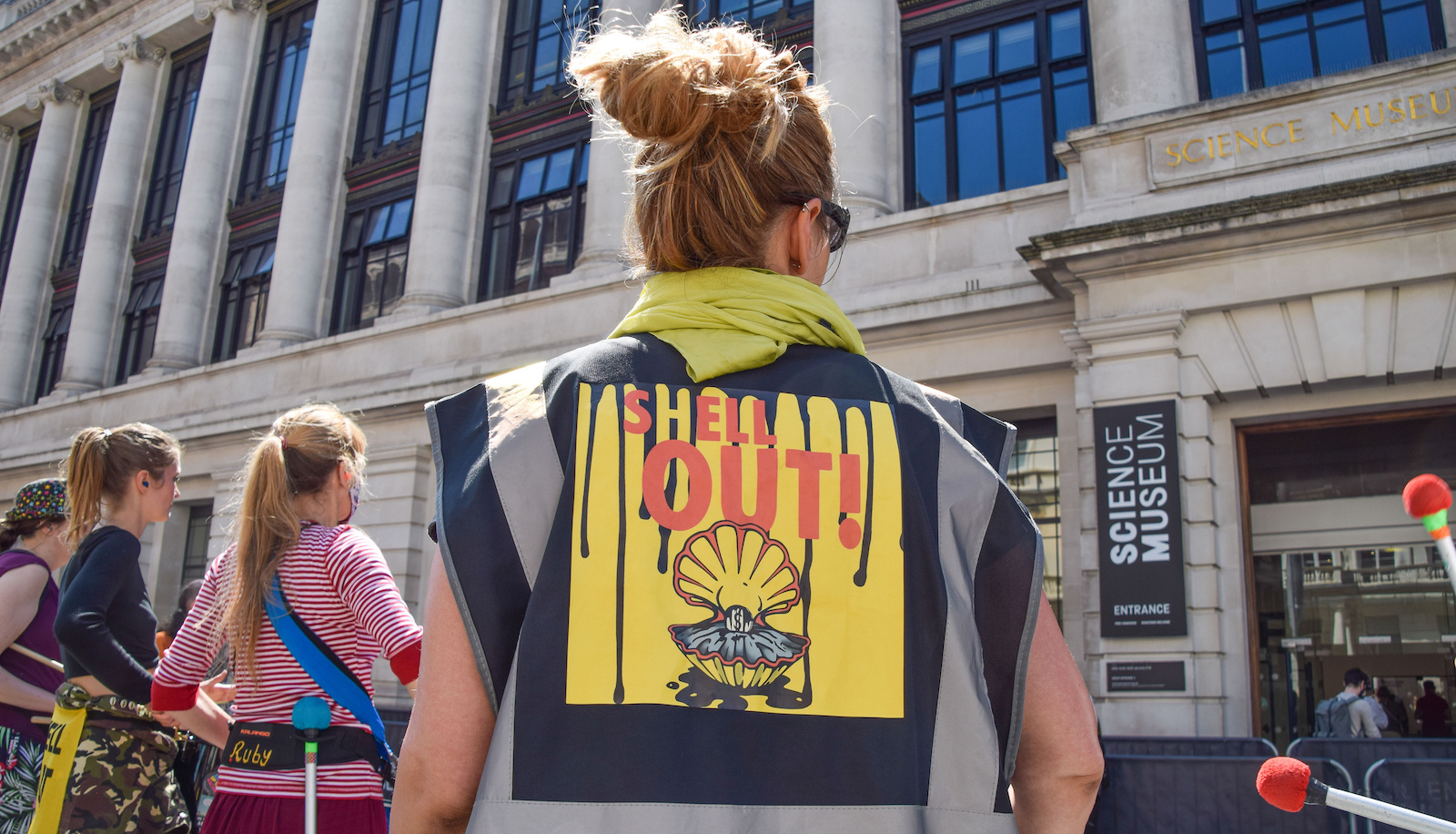The day the Science Museum in London opened its latest exhibition on climate change in May, a group of scientists from the climate activist group Extinction Rebellion locked themselves inside in protest. Their gripe? The exhibit, called “Our Future Planet,” which highlights the promise of technologies to suck up carbon dioxide from the air or from industrial smokestacks, was sponsored by the oil and gas giant Shell.
The sponsorship first sparked outcry when it was announced in April. “We condemn the Science Museum’s decision to accept this sponsorship and provide Shell with an opportunity for brazen green-washing,” the U.K. Student Climate Network wrote in an open letter at the time. The Science Museum Group’s director defended the exhibit and the sponsorship, saying “we retain editorial control.”
But on Thursday, new evidence emerged showing that the money Shell offered for the exhibit was not unconditional. Culture Unstained, an activist group whose aim is “to end fossil fuel sponsorship of culture,” obtained Shell’s sponsorship contract with the Science Museum under freedom of information act laws. The contract stipulates that the museum could not take any action that would be seen “as discrediting or damaging the goodwill or reputation of the Sponsor.”
Fossil fuel companies are regular sponsors of museum exhibits, and cultural institutions in general, but their donations have come under increased scrutiny in recent years. U.K. activists have been staging regular protests at the British Museum for the past several years demanding it end its long-standing relationship with BP. Critics argue that allowing companies like BP to put their logos on museum walls elevates their status in society, perpetuates their social license to operate, and potentially influences curatorial decisions.
It’s clear what Shell had to gain in the case of the “Our Future Planet” exhibit. The exhibit centers on technologies that oil and gas companies like Shell say will allow them to keep selling fossil fuels while reducing their emissions. The exhibit will be up through the fall, when thousands of political leaders from all over the world will pass through the U.K. to attend the United Nation’s annual climate conference. As Grist’s Kate Yoder observed in a 2019 story about the oil industry’s relationship with museums, “Philanthropy isn’t just an avenue to dignify fortunes — it can also serve as an attempt to influence where society is headed.”
Visitors start the “Our Future Planet” exhibit with a journey through the “the oldest forms of carbon capture technology: trees and plants,” according to a promotional post on the Science Museum’s website. Next, they encounter a mechanical tree developed by Klaus Lackner, a professor at Arizona State University and pioneer of technology that captures carbon directly from the air. Later, they learn about attempts to capture carbon dioxide in rock dust, an approach called enhanced weathering. Finally, museumgoers are introduced to methods to capture carbon from the flue gas of fossil fuel–burning power plants and industrial plants, along with products that can be produced with that captured CO2, like concrete, yoga mats, and vodka.

International research bodies like the Intergovernmental Panel on Climate Change and the International Energy Agency say these kinds of solutions will be required to stabilize the climate. But the technologies are still nascent, and it is unclear whether they will become commercially viable or at what scale. Scientists who support carbon capture and carbon removal warn that they should not be seen as a replacement for rapidly cutting emissions with the technologies we have today.
Shell has made a commitment to reduce its emissions to net-zero by 2050, but its plan is to keep selling oil and gas while relying heavily on carbon capture and storage, as well as so-called nature-based solutions, like planting trees, to offset its emissions. In May, a Dutch court ruled that Shell’s plans were not in line with the Paris Agreement and ordered the company to cut emissions more quickly. Shell is appealing the verdict.
A museum exhibit that teaches people about carbon capture and carbon removal could be seen as a good thing, since research has shown the public is still largely confused about what these terms mean. But I would hope that it also invites visitors to think about the risks and challenges of these solutions in addition to their promise. I haven’t been to the exhibit myself, but a critic writing in the magazine New Scientist concluded, “The exhibition mostly gets the balance right between pessimism and optimism, although it could have gone further in showing how expensive and small scale this stuff is.”
A Shell spokesperson told Channel 4 News, “We fully respect the museum’s independence. That’s why its exhibition on carbon capture matters and why we supported it. Debate and discussion — among anyone who sees it — are essential.”
For what it’s worth, in a blog post on the museum’s website, exhibition advisor Bob Ward said the world faces an “urgent task” to reduce emissions and that “this will mean a fundamental shift away from fossil fuels as our primary source of energy.” Ward acknowledges that there are large uncertainties around the solutions presented in the exhibit, and the concern that counting on them could reduce ambition to cut emissions more rapidly. But he adds that “we are more likely to make a rapid and orderly transition to a zero-carbon economy if oil companies play a genuinely committed and active role.”




